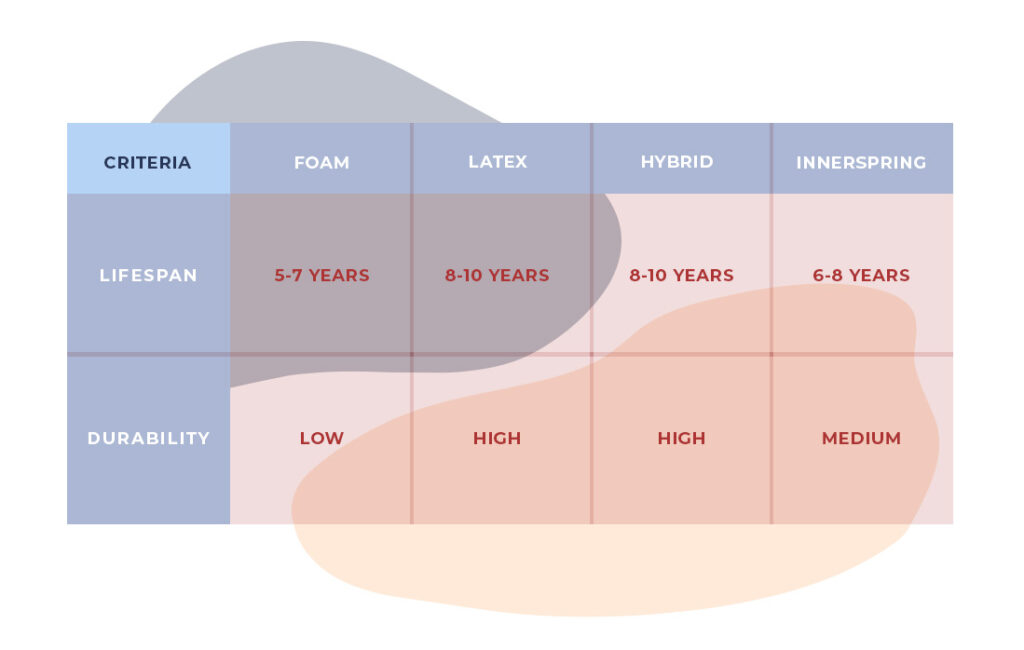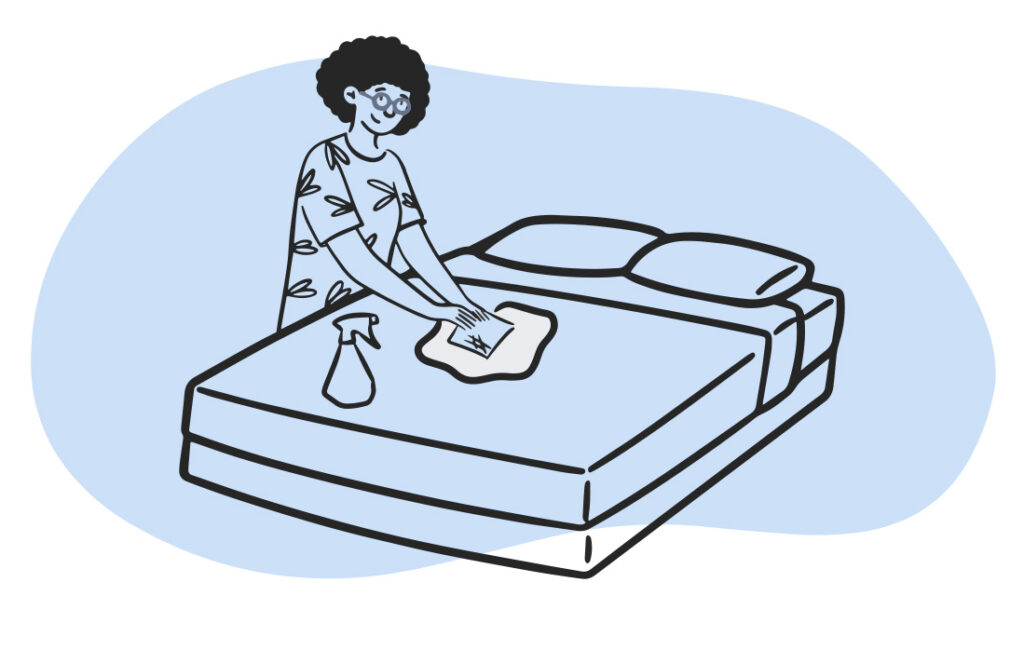How Often Should You Replace Your Mattress?
Disclosure: By clicking on the product links in this article, Mattress Nerd may receive a commission fee at no cost to you, the reader. Read full disclosure statement.
Most items that need replacing have a way of letting us know. From warranties to expiration dates, context clues usually give us a sense of a product’s lifespan. But what about your mattress? How long does a mattress last—and when will you know it’s time to hit the hay on a new one?
Because the warning signs aren’t as obvious, it’s important to have a basic understanding of how long mattresses last so you can make an informed decision when it comes time for a replacement. Mattresses past their prime won’t be as supportive and comfortable, and that can affect your precious sleeping time.
Here’s what you need to know about the lifespan of a mattress and how often to replace it.
How Long Does A Mattress Last?
Due to the constant, daily use they endure, most mattresses have a lifespan of about seven years. Whether your bed is below or above that average is largely dependent on its materials.
Foam mattresses have the shortest lifespans, lasting as little as five to seven years, due to their lower durability. Innerspring mattresses, on the other hand, last a bit longer—anywhere from six to eight years. But if you want a mattress that will give you the most bang for your buck, spring for a latex or hybrid mattress as these can last up to 10 years with proper care.

Factors Influencing Mattress Lifespan
- Type and materials: Different types of mattresses are built to last different amounts of time. As you can see in the table above, foam mattresses have the shortest lifespan, while latex and hybrid mattresses tend to last much longer. Within that, some materials are just better crafted and may last longer. You may find these more in luxury mattresses.
- How often it’s used: Obviously, the mattress you sleep on every night is going to wear out faster than the guest room bed that only gets used a few times a year. The more often a mattress is used, the sooner it will need to be replaced.
- How well you care for it: Just like any other piece of furniture, how well you take care of your mattress will affect how long it lasts. This includes using a mattress protector, regularly cleaning it, rotating it every six months, and not jumping on it like a trampoline.
- Your sleeping position: If you’re a side sleeper, over time, you might notice some dipping and sagging in the mattress right where your hips and shoulders lie. Choosing a mattress that supports your natural sleep position can help alleviate this issue and extend the lifespan of your mattress.
- Your body type: Heavier people are going to sink into their mattresses more, which will cause the mattress to lose its shape and firmness more over time. Again, finding a mattress that accommodates your weight can help it last a bit longer.
How Often Should A Mattress Be Replaced?
It’s easy to get attached to our self-created, cozy little cocoons. After all—who wants to replace a mattress that’s comfortable and familiar? But even the best mattresses have lifespans, so it’s important to know how often to replace yours.
While every seven years is a good rule of thumb, different mattress types have different lifespans. Foam and innerspring mattresses need to be replaced around the seven-year mark, but latex and hybrid models can last up to 10 years.
Not sure what your mattress lifespan is? Check for the following signs that it’s time for a replacement:
- Noticing sagging, lumps, and coils when you lie down
- Experiencing allergy flare-ups that have no other explanation
- Finding visible mold or mildew on the mattress
- Spotting bed bugs
- Hearing the springs with every move you make
- Waking up with muscle stiffness every morning

How To Make A Mattress Last Longer
Not ready to part with your beloved bed just yet? No worries—there are a few maintenance practices you can implement to help extend the lifespan of your mattress and get a few extra years of use:
- Flip them regularly: Most older mattresses are double-sided, so flipping them every few months can help prevent sagging and body impressions. Just make sure you actually have a double-sided mattress before you start flipping it—some newer mattresses are only meant to be used one way.
- Rotate them: Yep, this is different from flipping. Rotating your mattress means moving it 180 degrees so that the head of the bed becomes the foot and vice versa. Rotate latex and memory foam mattresses every six months and innerspring and hybrid mattresses anywhere from two to five times a year.
- Use a mattress protector. This will help keep your mattress clean and free of stains, which can lead to premature wear and tear. Just make sure you choose a mattress protector that’s comfortable and breathable so it doesn’t affect the quality of your sleep.
- Keep them clean: Vacuum your mattress regularly to remove dust mites, dead skin cells, and other allergens. If it’s starting to look a little dingy, you can spot-clean it with a mild detergent and some warm water.
Final Thoughts
Mattresses are not meant to be lifelong companions. Like any other piece of furniture, they have a lifespan. But with proper care and maintenance, you can extend that lifespan and enjoy your mattress for a few extra years. Just remember that if you start to notice any signs that it’s time for a replacement, it’s probably best to bite the bullet and get a new one.
If you’re interested in learning about when to replace your pillows, check out our article.